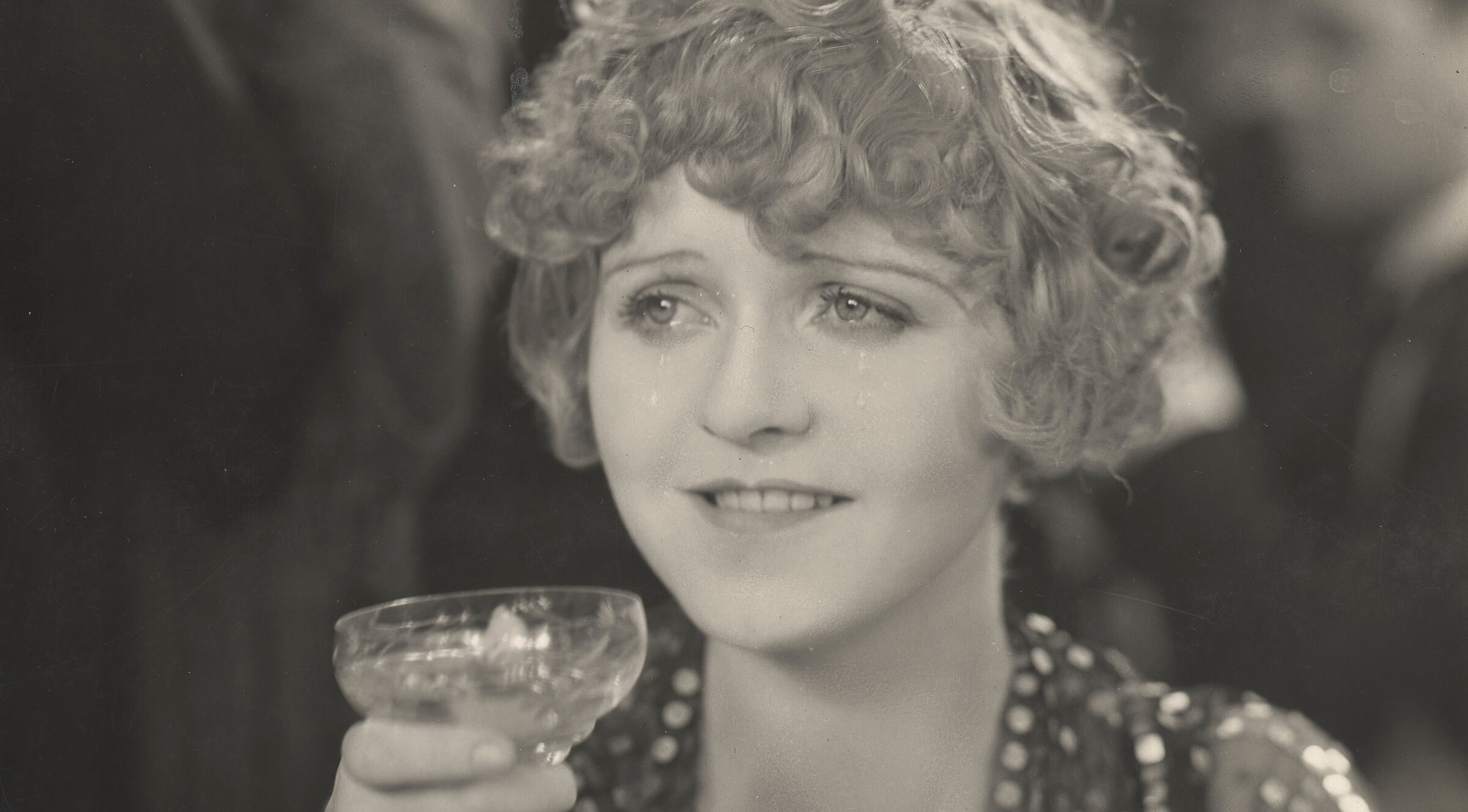Champagne is a romantic comedy about a millionaire’s decision to teach his frivolous “flapper” daughter (played by the effervescent comedy actress Betty Balfour) a lesson by feigning bankruptcy.
Hitchcock saw it as a rags-to-riches story about a poor girl working in a Reims champagne factory and seeing the bottles go off to Paris for rich bons viveurs. Finding her way to the big city, she would mix with the champagne drinkers as a paid nightclub hostess, but her virtue would be put at risk. Eventually, she would return home, older and wiser, and renounce her champagne lifestyle forever. In the end, though, Walter Mycroft rewrote the script, reversing the direction of travel, making Balfour’s character an irresponsible young ‘modern’ who infuriates her rich Daddy with her frivolous, champagne lifestyle (she arrives flying her own aeroplane in true roaring twenties style) and her relationship with a young man who her father believes is a gold-digger. In fact the young man has a very sound moral compass, but can’t help preaching to her—which only pushes her into ever more reckless behavior—when in fact, she, like “Thoroughly Modern Millie,” is actually a nice old-fashioned girl at heart.
Whatever Hitchcock thought about the story, he did introduce the usual pleasing experimental touches, including a glorious opening shot filmed through a raised champagne glass and some entertaining effects to convey sea sickness on the part of the girl’s fiancé (played by French matinée idol Jean Bradin). Most recognizably Hitchcockian are the scenes between Betty and “the man”, a sinister ‘cosmopolitan’ man of the world, who crops up with disturbing regularity and whose motives she suspects. She even imagines herself sexually assaulted by him in the cabaret where, in the search for employment, she is fast discovering the sordid flipside of her former clubbing lifestyle. Surprisingly, the scene made it past the censor, perhaps precisely because it was revealed as fantasy, but throughout his filmmaking career Hitchcock would continue to pursue his interest in male sexual violence and to push at the boundaries of what was acceptable to show on screen.
The Restoration
The restoration team was able to work from an original negative on the restoration of Champagne, which meant they were able to get very good image quality. But this, it turned out, was something of a mixed blessing. From the beginning of the restoration process it was apparent that, for a Hitchcock film, there were some clumsily juxtaposed shots and framing errors, while a few shots showed substandard acting. Closer examination revealed an instruction scratched into a leader saying “2nd neg”. From this we deduced that this negative was assembled from second-best shots, retained as a back-up in case of damage to the original or for making additional prints for export. As this negative is the only original element in existence, it now looks as if we will never know exactly what the film looked like as it was originally released.
A great deal of work went into the preparation of the film before it could be scanned: the negative had been stored in sections joined loosely with tape. Some minor continuity errors were dealt with and some dissolves, which had been left ‘unmade’ in the negative, were tidied up before the film underwent grading and digital restoration processes. As with most of the other Hitchcock restorations, the titles were completely remade, recreating exactly the original fonts and illustrations. The edit may be slightly compromised due to the source material that has come down to us but the result is a truly beautiful looking print doing full justice to Betty Balfour’s sparkling frocks.
A Rialto Pictures Release • 105 • minutes • DCP
Restoration by the BFI National Archive in association with STUDIOCANAL
Principal restoration funding provided by The Eric Anker-Petersen Charity
Additional funding provided by Deluxe 142
Presented at The Hitchcock 9 event in 2013 with live music by Judith Rosenberg

